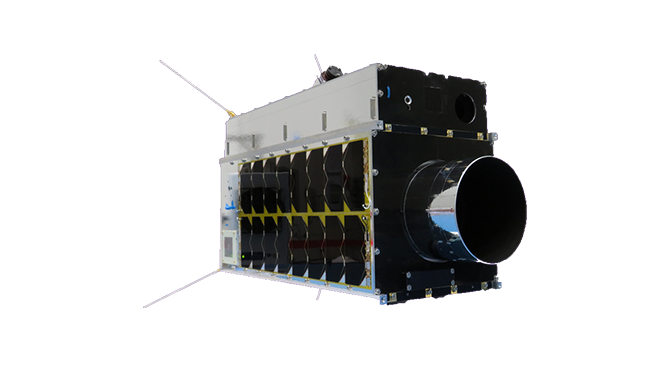Critical Microspace Technologies for Successful Earth Observation

In the previous blog discussing why microspace technologies have been key enablers for affordable and timely development of national Earth observation missions, we mentioned that certain capabilities helped make operational use of smaller satellites a reality. At Space Flight Laboratory (SFL), we are proud to have played major roles in creating and refining many of these microspace capabilities, especially those that have made small satellite remote sensing possible.
If your organization is considering initiating an Earth observation mission, these are the critical capabilities required for your nano-, micro-, small- or CubeSat platform:
Stability – In general, platform stability was the technical challenge that historically prevented smaller satellites from performing the same operational applications as larger ones. The reason for this is that smaller spacecraft get perturbed more easily in orbit because of their lower inertia. SFL was a pioneer in solving this problem by developing attitude control software and hardware to keep smaller platforms steady.
Accurate Pointing and Pointing Knowledge – Related to platform stability, pointing accuracy determines how well you are oriented relative to your target. Similarly, pointing knowledge is the degree to which you know how you are oriented relative to the target. Both are critical, but neither is perfect. An appropriate understanding of the need for geometric correction in post-processing complements a good attitude control system. Furthermore, different pointing modes such as nadir, off-nadir, and target tracking will have different accuracies. In a target tracking application, a remote sensing satellite must be able to maneuver in orbit to point its instrument at the desired target. In this case, the sensor is required to dwell on the target for a period of time, meaning the satellite itself must slew in orbit to maintain the desired pointing. The expertise needed to make this work well should not be underestimated.
High-Speed Data Downlink – Whether optical, radar or hyperspectral, remote sensing data sets are huge, and fast downlink capability is critical to download all the collected data when the spacecraft footprint is over a ground receiving station. If the downlink transmission rate is too slow, the productivity of the spacecraft will be reduced, or additional ground stations will have to be added to the network at increased cost. In either case, onboard downlink capabilities must be designed in concert with those of the ground receiving network.
Onboard Mass Memory – No satellite is within range of a ground receiving station all the time, which means the spacecraft will have to record huge volumes of data onboard until downlink is available. During the satellite design phase, the operator must determine how large the collected data sets will be, how often they will be captured, and when downlinks will be available. Calculated correctly, this enables the most cost-effective onboard memory to be integrated into the spacecraft.
Encryption/Decryption – Unfortunately, data downlink and command uplink signals can be intercepted by bad actors either on the ground or in space. For this reason, many Earth observation missions protect their data transmissions in both directions with encryption and decryption capability. Many options exist, but they usually take the form of a stand-alone hardware unit on the spacecraft. They should be chosen carefully so as to maintain the ability to safely recover the satellite in off nominal situations.
In summary, many different microspace technologies contribute to making Earth observation missions more affordable than once thought possible. Each technology has many variations and cost points. Not all microspace manufacturers are equal. The best way to select the right technology is to engage with a trusted microspace organization early in the mission definition. Such an organization, if having a solid track record in microspace, will be helpful in ensuring that proper design trades are made that achieve the end objectives at lowest cost. That will typically help you make the right choices and trade-offs.
Do you have an Earth observation or other microspace mission in mind? Send SFL an email at info@utias-sfl.net, and we will gladly discuss your concept and walk you through the mission development process.

